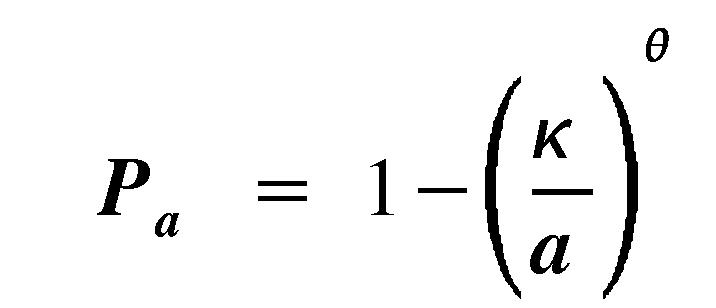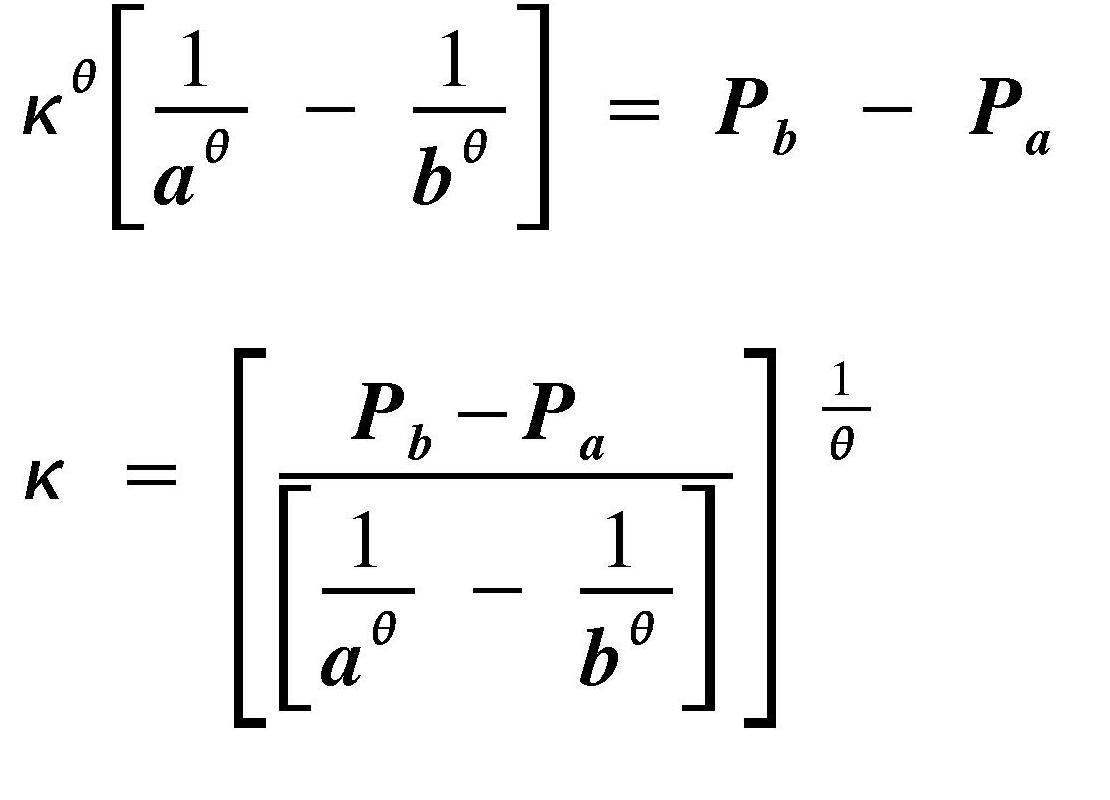|
a = |
income value at the lower limit of the category containing the median |
|
b = |
income value at the upper limit of the category containing the median |
|
Pa = |
proportion of the distribution that lies below the lower limit |
|
Pb = |
proportion of the distribution that lies below the upper limit |
Through basic algebraic transformations, we use these known values to solve for k and theta as shown in Figures 4 and 5. The median can then be calculated by inserting the values of k and theta into the formula in Figure 1.









